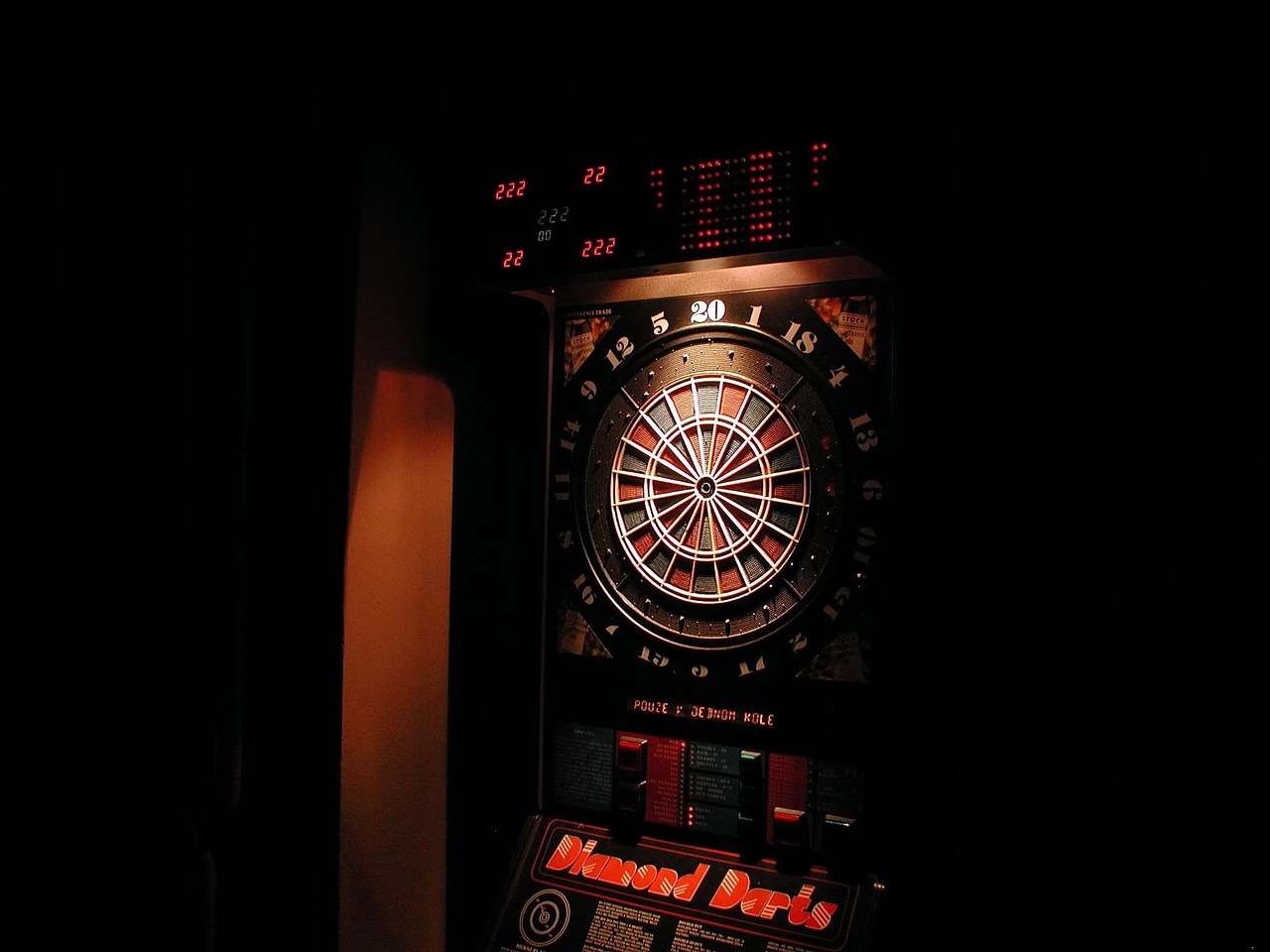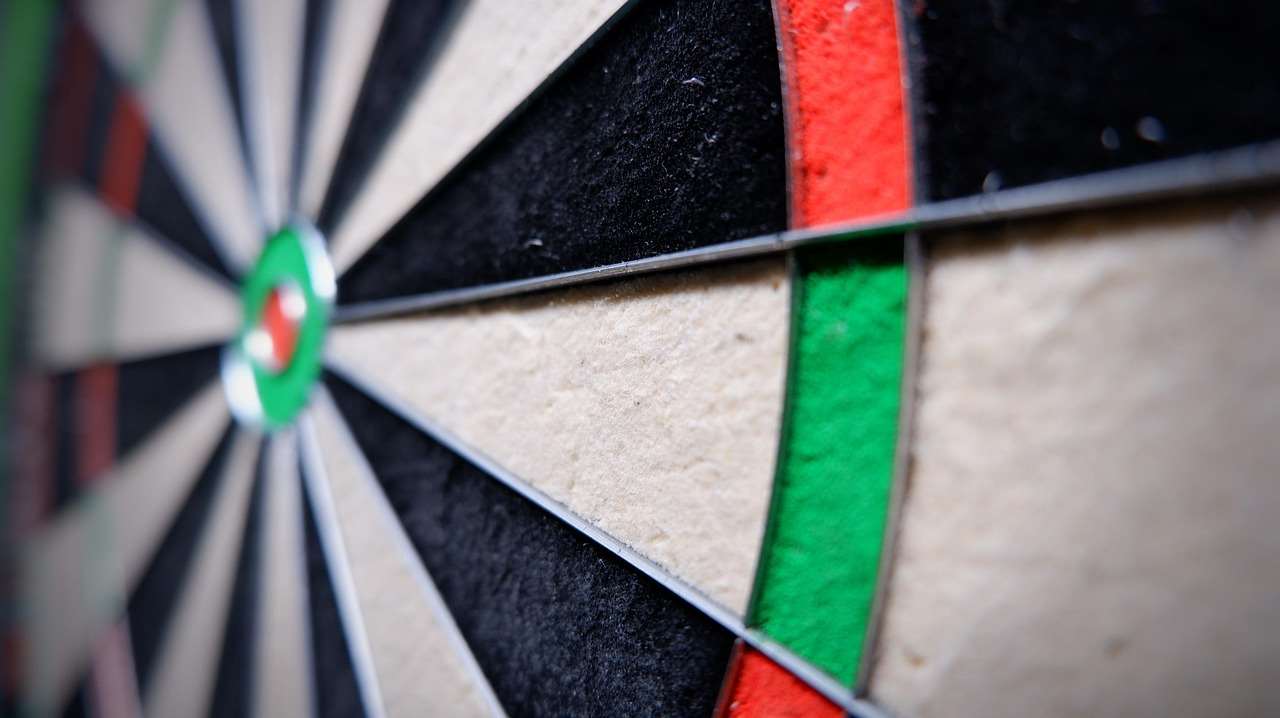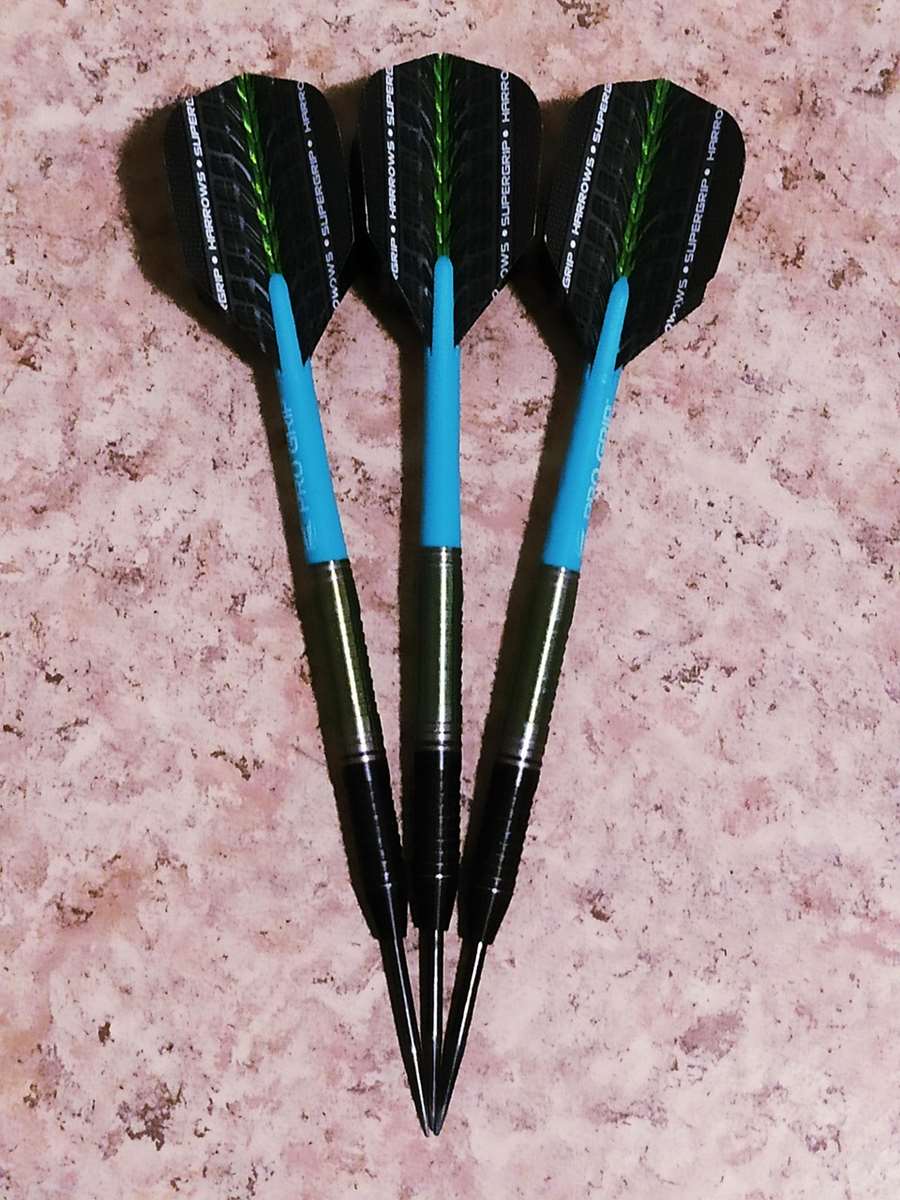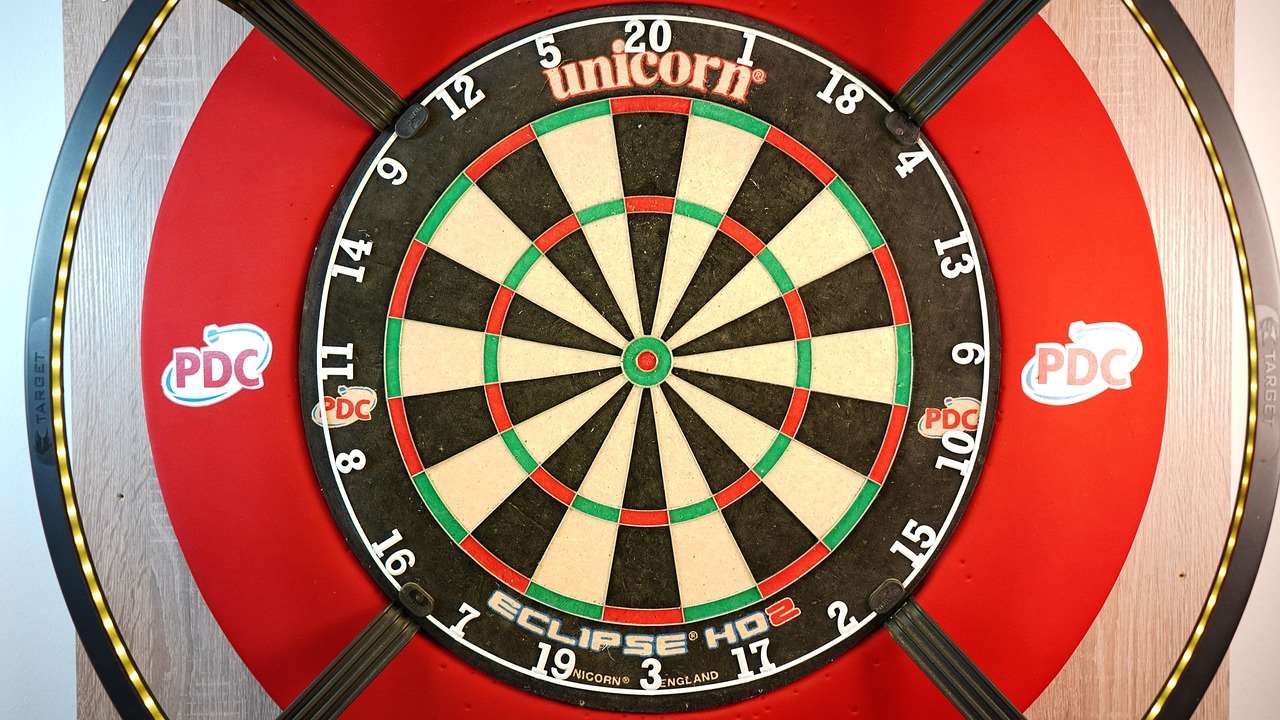Mastering the game of darts starts long before your first throw; it begins with understanding and perfecting your darts setups. This article provides a comprehensive guide to optimizing your dartboard setup, from proper measurements and board types to lighting and accessories, ensuring you have the ideal environment for consistent performance and maximum enjoyment. You’ll learn everything you need to create a professional-quality darting experience at home or in your local pub.
⚠️ Still Using Pen & Paper (or a Chalkboard)?! ⚠️
Step into the future! The Dart Counter App handles all the scoring, suggests checkouts, and tracks your stats automatically. It's easier than you think!
Try the Smart Dart Counter App FREE!Ready for an upgrade? Click above!
Understanding the Basics of Darts Setups
A well-executed darts setup is fundamental for both casual players and serious competitors. Getting it right involves more than just hanging a board on the wall. It’s about precision, consistency, and creating an environment that allows you to focus on your game. Key elements include the correct height, distance, and adequate lighting. Let’s delve into each of these aspects in detail.

Dartboard Height: Hitting the Bullseye Every Time
The official height for a dartboard, measured from the floor to the center of the bullseye, is 5 feet 8 inches (1.73 meters). This measurement is crucial for maintaining consistency in your throws. Using a reliable tape measure is highly recommended to ensure accuracy. Even a slight deviation can significantly impact your game over time. When setting the dartboard height, remember to double-check the measurement after mounting the board, as slight shifts can occur during installation. For those unsure, a laser level can assist to guarantee a perfectly aligned darts setup.
Oche Distance: Stepping Up to the Throwing Line
The throwing distance, also known as the oche, is another critical component of darts setups. For steel-tip darts, the horizontal distance from the face of the dartboard to the front edge of the oche line is 7 feet 9 1/4 inches (2.37 meters). For soft-tip darts, this distance is 8 feet (2.44 meters). Ensure that the oche line is clearly marked and securely in place. Some players prefer a raised oche to provide a more tactile feel and prevent accidental stepping over the line. Investing in a quality oche mat can enhance the professional feel of your darts area.
Essential Components of Darts Setups
Beyond the basic measurements, several other components contribute to a high-quality darts setup. These include the type of dartboard, the surrounding backboard or cabinet, and proper lighting. Each element plays a role in protecting your surroundings, improving visibility, and enhancing the overall playing experience. Choosing the right components can significantly elevate your game and create a more enjoyable environment.
Dartboards: Sisal vs. Electronic
The choice of dartboard primarily comes down to personal preference and the type of darts you’ll be using. Sisal dartboards are the standard for steel-tip darts, offering durability and self-healing properties. Electronic dartboards are designed for soft-tip darts and often include built-in scoring systems. When selecting a sisal board, look for one with a high-quality sisal density and a thin wire spider to minimize bounce-outs. For electronic boards, consider features like automatic scoring, game variations, and player statistics. Ensure your electronic dartboard has all the features you’d like to use!
Consider also the dart board cork you buy. A high quality cork will prolong the life of your darts.
Backboards and Cabinets: Protecting Your Walls
A backboard or cabinet is essential for protecting the wall behind your dartboard from stray throws. Backboards are typically made of wood, cork, or foam and provide a wider target area to catch errant darts. Cabinets offer the added benefit of concealing the dartboard when not in use and often include storage for darts and accessories. When choosing a backboard or cabinet, consider the size, material, and style to complement your playing area. Proper wall protection is a must-have for well-planned darts setups.

Lighting: Illuminating the Target
Adequate lighting is crucial for clear visibility and accurate aiming. Poor lighting can strain your eyes and affect your throwing accuracy. The ideal lighting setup involves illuminating the dartboard evenly from all sides to eliminate shadows. Options include dedicated dartboard lighting systems, overhead lights, or spotlights. Ensure that the lighting is bright enough to clearly see the board but not so harsh that it causes glare. Well-lit darts setups significantly improve your playing experience.
Advanced Tips for Optimizing Your Darts Setups
Once you have the basic elements in place, you can further optimize your darts setup with advanced techniques and accessories. These include customizing your oche, fine-tuning your lighting, and choosing the right darts and accessories. Small adjustments can make a big difference in your performance and enjoyment of the game.
Customizing Your Oche: Finding the Perfect Stance
The oche is more than just a line on the floor; it’s the foundation of your stance and throwing motion. Some players prefer a raised oche made of wood or metal, while others opt for a simple tape line or oche mat. Experiment with different oche heights and materials to find what feels most comfortable and natural for your stance. A stable and comfortable oche can improve your consistency and accuracy. Remember to consider personal preference when designing your darts setups.
Fine-Tuning Your Lighting: Eliminating Shadows
While general lighting is important, fine-tuning your lighting setup can further enhance visibility and eliminate shadows. Experiment with different light angles and intensities to find the optimal configuration. Consider using adjustable spotlights or dimmable lights to customize the lighting to your preferences. Eliminating shadows and glare can improve your focus and accuracy. Consider adding a dimmer to your lighting, or changing to lower wattage bulbs.

Choosing the Right Darts and Accessories
The type of darts you use can significantly impact your game. Experiment with different weights, shapes, and materials to find the darts that feel most comfortable and balanced in your hand. Invest in quality flights and shafts to improve aerodynamics and stability. Other useful accessories include a dart sharpener, a dart case, and a Darts scoreboard app for tracking your scores and statistics. The best darts setups account for personalized equipment.
Maintaining Your Darts Setup
Proper maintenance is essential for prolonging the life of your dartboard and ensuring consistent performance. Regular cleaning, rotation, and occasional repairs can keep your darts setups in top condition for years to come.
Cleaning and Rotating Your Dartboard
Regularly clean your dartboard with a soft brush to remove dust and debris. Rotating your dartboard periodically can help to distribute wear and tear more evenly, extending its lifespan. Focus on rotating the areas that receive the most use, such as the 20 and the bullseye. Simple maintenance is key to longevity in darts setups.
Repairing Minor Damage
Over time, your dartboard may develop minor damage, such as loose wires or compressed sisal fibers. Use a dartboard repair kit to fix loose wires and pack down any raised fibers. Addressing minor damage promptly can prevent it from escalating into more serious problems. Knowing how to do small repairs to your board will ensure you get the most out of your dart board cork!
Storing Your Darts and Accessories
Proper storage is essential for protecting your darts and accessories from damage. Store your darts in a dart case to prevent them from being bent or broken. Keep your flights and shafts in a separate compartment to avoid crushing or tearing. Organizing your accessories can also make it easier to find what you need when you’re ready to play.

Troubleshooting Common Issues with Darts Setups
Even with the best planning, you may encounter issues with your darts setup. Common problems include bounce-outs, wobbly dartboards, and inadequate lighting. Troubleshooting these issues can help you optimize your setup and improve your playing experience.
Dealing with Bounce-Outs
Bounce-outs can be frustrating, but they are often caused by simple factors such as dull dart points, loose wires, or incorrect throwing technique. Sharpen your dart points regularly, ensure that the wires on your dartboard are secure, and practice proper throwing technique. A higher-quality dartboard with thinner wires can also help to reduce bounce-outs. If you have frequent bounce outs, you may want to consider if darts bull to oche is the proper distance.
Stabilizing a Wobbly Dartboard
A wobbly dartboard can be distracting and affect your accuracy. Ensure that your dartboard is securely mounted to the wall using appropriate hardware. If the wall is uneven, use shims to level the dartboard. Tighten all screws and bolts regularly to prevent the dartboard from becoming loose. A stable dartboard is essential for consistent performance in darts setups.
Improving Inadequate Lighting
If your lighting is inadequate, experiment with different light sources and angles to improve visibility. Add additional lights to eliminate shadows and glare. Consider using a dedicated dartboard lighting system for optimal illumination. Ensure that the lighting is bright enough to clearly see the dartboard without straining your eyes.

Creating the Ultimate Darts Experience
By following these tips and guidelines, you can create the ultimate darts experience in your home or pub. A well-executed darts setup can enhance your game, protect your surroundings, and provide hours of enjoyment for you and your friends. Remember to customize your setup to your preferences and prioritize comfort, consistency, and visibility. Whether you’re a casual player or a serious competitor, a properly configured darts setup is essential for success. You might even set a new darts record set average!
The world of darts setups is very important for any player, new or old. Now you know the ins and outs, take the leap and create your perfect darts haven.
Hi, I’m Dieter, and I created Dartcounter (Dartcounterapp.com). My motivation wasn’t being a darts expert – quite the opposite! When I first started playing, I loved the game but found keeping accurate scores and tracking stats difficult and distracting.
I figured I couldn’t be the only one struggling with this. So, I decided to build a solution: an easy-to-use application that everyone, no matter their experience level, could use to manage scoring effortlessly.
My goal for Dartcounter was simple: let the app handle the numbers – the scoring, the averages, the stats, even checkout suggestions – so players could focus purely on their throw and enjoying the game. It began as a way to solve my own beginner’s problem, and I’m thrilled it has grown into a helpful tool for the wider darts community.